Learn about how to build houses in a few dozen hours, life expectancy of several decades
You must have heard of a very fast way to build a house in just a few dozen hours but the lifespan is no less than how to build our traditional home. How did they build them?
Completely different from building a traditional house, building from the foundation, placing each brick, plastering every bit of mortar, how to build this house like you are playing a giant lego set. The workers will erect a building from pieces of a fully prepared part of the house. Materials will be brought to the construction site to install. It's called a prefacbricated building or prefab for short .
Video about how to build built houses .
If you think this is a new way of being used by people when modern technology is used, you are wrong. This construction technique has been around for a long time, as evidenced by the rise of architectural buildings that have spread throughout the history.
According to the South Australia Record, the first prefab house was the " Manning cottage ", built by a London carpenter named Henry Manning in 1837. He built the house with ready-made parts and reassembled. Currently, such buildings are preserved in Australia, one of which is the Friends Meeting House, built in 1850.
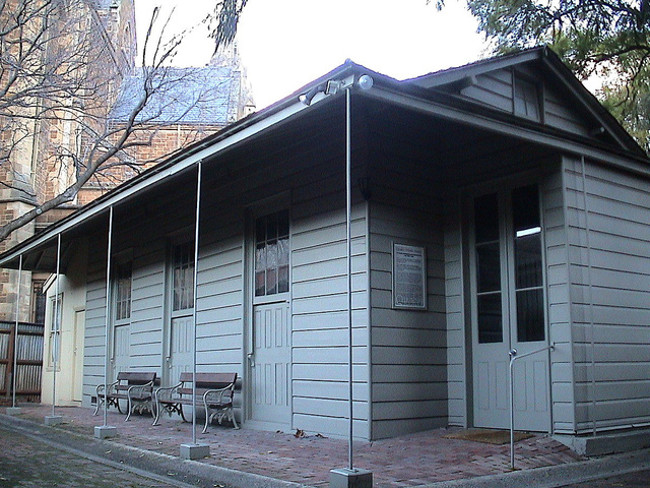
Friends Meeting House is still in use.
The quick convenient construction method is known. By 1853 hundred people had come to Australia from everywhere like Liverpool, Boston or Singapore to learn about this construction method.
In Barbados, located in the Americas, such built houses are called Chattel houses (slavery houses), because black people of that time had very little right to build on their land.
In 1855 during the Russian War (Crimean War), the engineer Isambard Kingdom Brunel , who was arguably the most genius engineer in the history of the industry, took on the task of building built hospitals. In just 5 months, he built 1,000 hospitals, with all necessary systems such as wastewater treatment, ventilation and flushing toilets. Only in March 1856 until September 1857, the death rate decreased from 42% to only 3.5%.
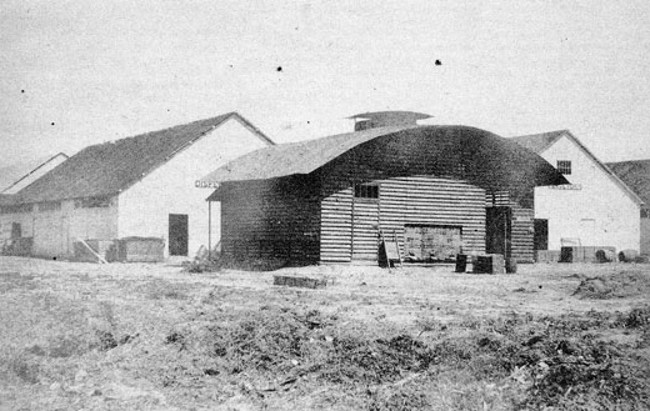
Renkioi Hospital of architect Isambard Kingdom Brunel.
The first block of apartments built in the world from Liverpool was invented by inventor genius John Alexander Brodie , who also invented the football goal net. But this invention was not widely adopted in its home town of Liverpool but spread to many other places, especially Eastern Europe.
In the 1908s, in the gold rush in the United States, built houses became common and often followed a common assembly. At that time, people can order a house by post.
In World War II, the need to build fast buildings for soldiers and built houses became extremely common.Quonsnet tents were used as bases as well as houses for American soldiers and British soldiers to have their own bases, with the name of the Nissen tent and the Bellman hangar.
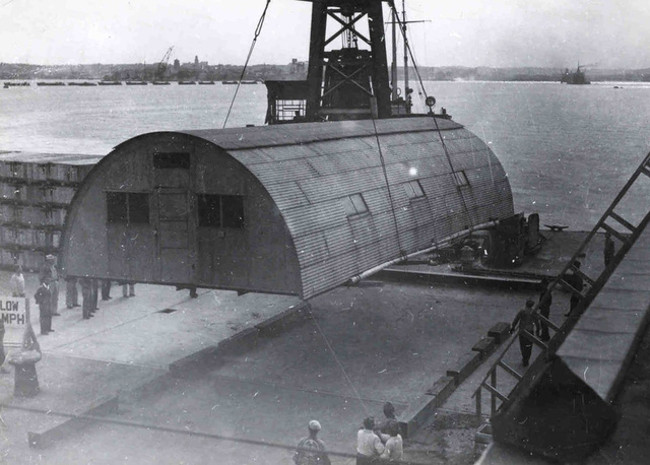
American Quonsnet Tent.
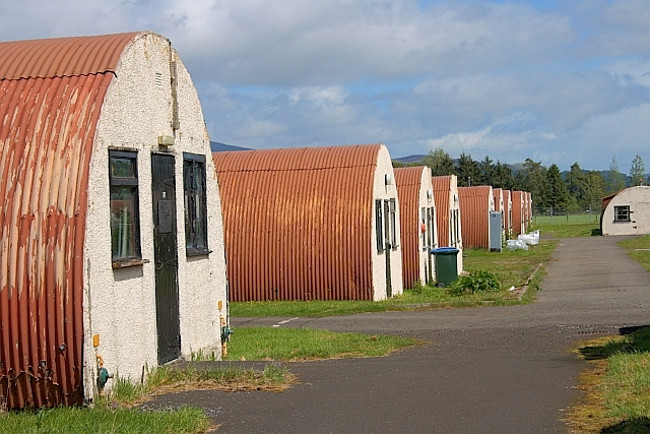
British Nissen Tent.
After the war, nearly 160,000 houses built by this method were built in the UK and by 1948, the total cost had reached nearly 216 million pounds. The UK's largest built-up area is Belle Vale in South Liverpool, where more than 1,100 built houses were built just after World War II.
The main goal that prefab houses are aimed at is small families, with the design of the house only need a small front hall, two bedrooms and a bathroom with a tub, a separate toilet and a living room near the kitchen. Construction materials are also simple with steel, aluminum, wooden bars or asbestos. With simple design and installation, such houses can be built anywhere, transported anywhere in the country.
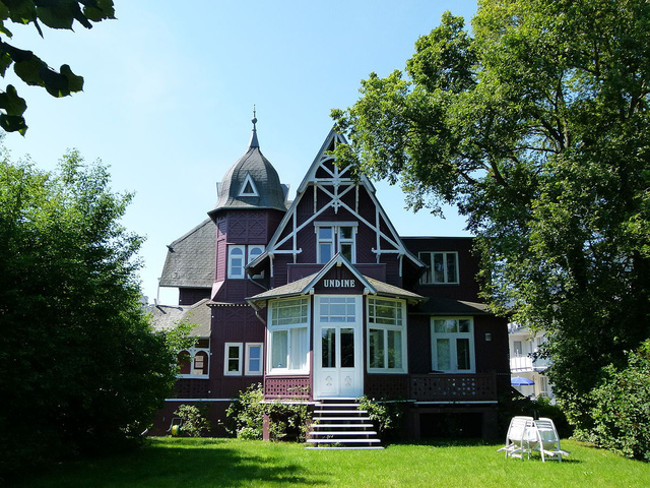
Villa Undine, built in Germany since 1885.
In the 1950s and 1960s, the United States used these built houses for troops and soldiers returning from the war. At the same time, in the UK, classes were also built this way.
Most prefab units are designed with a 5 to 10 year lifespan. But so far, many houses still exist and use. As in 2002, there are still more than 700 prefab houses in Bristol, England.
Currently, due to population explosion leading to a shortage of houses, built houses are gradually revived. They are set in a modern, more environmentally friendly way by using safer materials for the Earth.
Depending on your interests and finances, you can choose a house with your favorite designs and colors. In particular, buyers can buy other parts, add rooms or, for example, add a solar battery system on the roof, provided they have enough land and enough space. All will be designed based on local climate and terrain conditions.
Currently such built houses are called perrinepod . With construction time of only 3 days and using environmentally friendly materials.
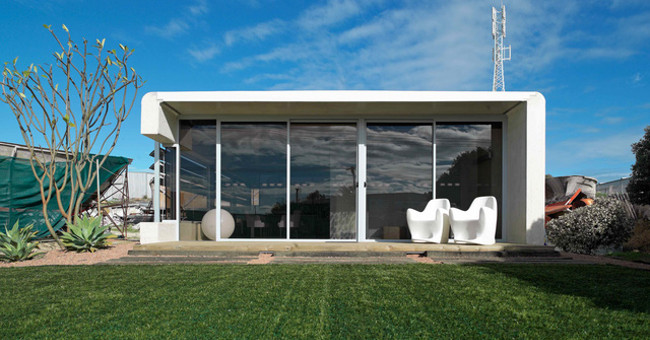
The record of built-up houses belongs to McDonald's fast-food chain, with a total of 13 hours of preparation and opening and selling of goods, excluding preparation time. building foundation.
In the UK, large supermarket chains are also built in such a way, ensuring extremely fast construction progress to be able to use as quickly as possible.
You should read it
- 3-model house with beautiful modern space
- Kenshi: A guide to building and repairing houses
- What are the special houses for millions of dollars built to deal with the end of the world?
- Marvel at the house with newspaper that has been around for nearly 100 years
- Model house with 4 nice flat roofs
- Travel backpack turns into a sleeping bivy tent for 30 seconds
- The White House and the interesting mysteries surprised many people
- Principles of design stairs for tube houses
May be interested
- How long is the life of air conditioning?
 a lot of users have the same question, how many years is the air conditioner used or is the longevity of the air conditioner long? to troubleshoot this problem of readers, the following network administrator will go with you to find the most accurate answer.
a lot of users have the same question, how many years is the air conditioner used or is the longevity of the air conditioner long? to troubleshoot this problem of readers, the following network administrator will go with you to find the most accurate answer. - Microsoft released Windows 10 build 17074, providing operating systems with many new features
 this is microsoft's first windows 10 build in 2018 for the windows insider program released to users of the fast ring branch (including skip ahead). the windows 10 build 17074 version has many improvements to the operating system that are not inferior to the final build of 2017.
this is microsoft's first windows 10 build in 2018 for the windows insider program released to users of the fast ring branch (including skip ahead). the windows 10 build 17074 version has many improvements to the operating system that are not inferior to the final build of 2017. - Smart cell home box knows 'transformation', fully self-assembled in 10 minutes
 all you need is electronic control. 10 minutes later, the house is ready to welcome you.
all you need is electronic control. 10 minutes later, the house is ready to welcome you. - The model of level 4 beautiful, modern
 the design of level 4 houses is simple, beautiful and modern, please refer.
the design of level 4 houses is simple, beautiful and modern, please refer. - Why does laptop battery never reach the same amount of time advertised?
 laptop manufacturers all promise that their products have 15 to 24 hours of battery life, but only last 10 hours at most.
laptop manufacturers all promise that their products have 15 to 24 hours of battery life, but only last 10 hours at most. - Beautiful garden level model 4
 here are beautiful 4-level garden houses, saving construction costs, please refer.
here are beautiful 4-level garden houses, saving construction costs, please refer. - A gamer spent 5 years to create a magnificent kingdom in Minecraft
 minecraft is an open world game, many works, kingdoms, wonderful wonders have been created in this game. a gamer spent nearly five years of his life creating his own magnificent kingdom called kingdom of galekin.
minecraft is an open world game, many works, kingdoms, wonderful wonders have been created in this game. a gamer spent nearly five years of his life creating his own magnificent kingdom called kingdom of galekin. - The moon has a life expectancy of about 4.51 billion years - bigger than we think and so does life
 earth's companion - the moon may have been formed within 60 million years after the solar system was born, and established a new phase for previous evolution of human life. .
earth's companion - the moon may have been formed within 60 million years after the solar system was born, and established a new phase for previous evolution of human life. . - 6 laptops have more than 10 hours of battery life
 on average, current laptops can run 4-5 hours on a single charge, but there are also systems that last tens of hours.
on average, current laptops can run 4-5 hours on a single charge, but there are also systems that last tens of hours. - Napping really affects longevity!
 new studies show that napping is linked to shortened life expectancy. taking a nap for too long will also be harmful to your health
new studies show that napping is linked to shortened life expectancy. taking a nap for too long will also be harmful to your health










 Successful production of Eco-Eco rice reduces climate change
Successful production of Eco-Eco rice reduces climate change How is the world's largest bank secure?
How is the world's largest bank secure? Inventions that help people have the power of superheroes
Inventions that help people have the power of superheroes 6 legendary battleships in World Navy history
6 legendary battleships in World Navy history Things to know about 'Kombucha tea' - fermented tea
Things to know about 'Kombucha tea' - fermented tea Interesting discovery: Human brain is more flexible than chimp brain
Interesting discovery: Human brain is more flexible than chimp brain